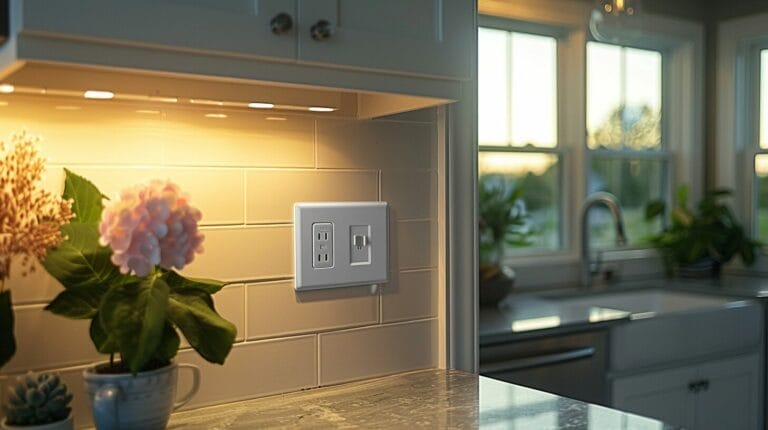What Is the Base Size of a Standard Light Bulb? Explained
When we think about light bulbs, we often focus on wattage or brightness, but the base size is equally important. Most of us are familiar with the E26 base, the standard size in the U.S., and the E12 base, commonly found in chandeliers. These numbers might seem significant, yet they play an essential role in ensuring our bulbs fit properly and function correctly.
So, how do these measurements impact our everyday lighting choices, and why should we care about them? Let’s explore the intricacies behind these base sizes and their significance in our daily lives.
Key Takeaways
- The E26 base size is the standard for light bulbs in North America.
- The E26 base has a diameter of 26 millimeters.
- E12 bases are smaller, with a 12-millimeter diameter, often used in chandeliers.
- Standard light bulb bases include Edison Screw (ES), simplifying installation.
- Proper base size ensures compatibility and optimal bulb performance.
Understanding the Basics of Light Bulb Base Sizes

Light bulb bases connect the bulb to the socket and ensure a steady flow of electricity. The base diameter is a key factor that determines compatibility of bulbs with different fixtures.
The most common base sizes are E26 and E12. The E26 base, often found in standard incandescent bulbs in the U.S., has a diameter of 26 millimeters. This screw-in type base is most prevalent in household lighting.
Conversely, the E12 base, featuring a 12-millimeter diameter, is generally found in chandeliers and decorative fixtures. Despite its smaller size, the E12 base ensures a secure electrical connection just as effectively as its larger counterparts.
Exploring the Edison Screw (ES) Base Type: The Standard for Light Bulbs

The Edison Screw (ES) base type is a versatile and user-friendly standard in the lighting industry. Originating from Thomas Edison’s original design, the ES base, particularly the E26 variant, is widely used across North America.
The E26 base refers to a specific bulb base size—26 millimeters in diameter. This standardized size ensures that an E26 bulb fits perfectly into a matching socket, providing a reliable and consistent connection.
The simplicity of the screw-in mechanism, along with the standardized size, has solidified the ES base as the industry standard.
Diving into the Size and Shape of Different Light Bulb Bases

The base size of a light bulb follows established standards to guarantee compatibility across different types of bulbs, including incandescent, LED, and compact fluorescent bulbs.
In terms of shape, the base of a light bulb can vary greatly. The most common shapes include the Edison Screw (ES), bayonet, and pin bases. Each shape is designed to suit specific applications, offering versatility in how we illuminate our spaces.
The measurement of the base size is typically expressed in millimeters and can be determined by measuring the diameter of the base. This precision ensures we select the right bulb for our fixture, avoiding any compatibility issues.
Comparing Base Sizes Across Different Types of Light Bulbs

Understanding the differences in base sizes between LED, incandescent, and fluorescent bulbs can help us make informed decisions for our lighting needs.
LED light bulbs often have standard base sizes similar to incandescent bulbs, making them suitable replacements. Common base sizes include E26 for most household uses and E12 for smaller fixtures.
In contrast, compact fluorescent lamps (CFL) and other fluorescent bulbs usually feature unique base sizes. CFLs often have a pin base, which differs from the screw bases of LEDs and incandescents.
Here’s a quick comparison:
| Bulb Type | Common Base Sizes |
|---|---|
| LED Light Bulbs | E26, E12 |
| Incandescent Bulbs | E26, E12 |
| Fluorescent Bulbs | Pin bases (various sizes) |
Choosing the Right Light Bulb Base Size for Your Socket

Selecting the right light bulb base size for your socket involves two key steps.
- First, identify the base type and size of your existing light bulb. This can be found on the bulb’s base or by measuring it. This step is vital as sockets can greatly vary.
- Next, match the bulb base size to the lamp or fixture socket. Common sizes include E26 for standard household bulbs, E12 for candelabra bulbs, and GU10 for spotlight bulbs.
Choosing the wrong base size can lead to flickering bulbs, illumination failure, or even damage to the fixture. Incorrect base size can also result in inefficient energy use and potential electrical hazards.
Conclusion
To sum up, understanding light bulb base sizes like E26 and E12 is crucial for ensuring a proper fit and peak performance.
We’ve explored the basics, the common Edison Screw bases, and the significance of matching the base size to your fixture.
By knowing these details, we can easily select the right bulb for our needs and avoid compatibility issues.
Let’s make sure we always check the base size before making a purchase to keep our lighting systems running smoothly.
Frequently Asked Questions
What is the base size of a standard light bulb?
The base size of a standard light bulb varies depending on the type of bulb. Common sizes include medium base (E26), candelabra base (E12), and mogul base (E39).
What are the differences between lamp types such as fluorescent, LED bulbs, and incandescent?
Fluorescent bulbs produce light by exciting mercury vapor, LED bulbs use light-emitting diodes, and incandescent bulbs produce light through a filament that heats up. Each type has different energy efficiency and longevity.
How do compact fluorescent bulbs differ from standard incandescent bulbs?
Compact fluorescent bulbs are more energy-efficient and have a longer lifespan compared to standard incandescent bulbs. They may also have different base sizes.
What does the term “Edison light” refer to?
The term “Edison light” typically refers to bulbs with a medium base (E26) which replicate the look of the original incandescent bulbs created by Thomas Edison.
How do you install twist and lock bulbs?
Twist and lock bulbs have a base that requires you to insert and twist the bulb into the socket to secure it in place. This type of installation ensures a secure connection and prevents the bulb from coming loose.







